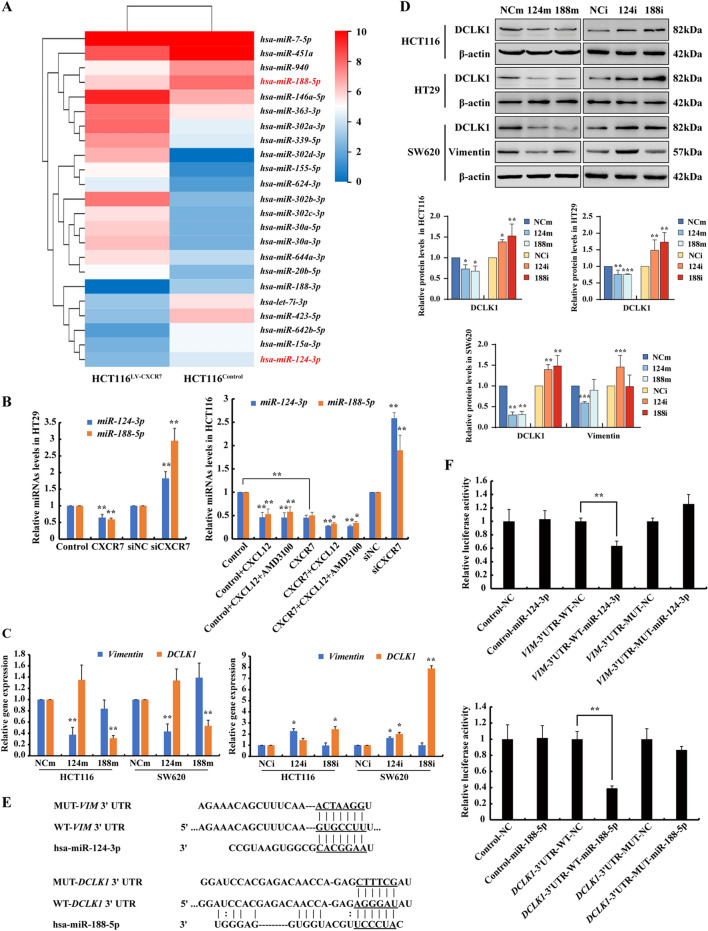Fig. 2.
CXCR7 biased signal activation contributes to EMT by repressing miR-124-3p and miR-188-5p. A RNA-sequencing was performed in HCT116 cells infected with CXCR7 and control lentivirus. Hierarchical clustering analysis of differentially expressing miRNAs between HCT116Control and HCT116LV−CXCR7 cells. B RT-qPCR analysis of miR-124-3p and miR-188-5p levels in HCT116 and HT29 cells infected with CXCR7 lentivirus or siRNA-CXCR7 and Controls with or without CXCL12 (100 ng/ml) in the presence of AMD3100 (2 μM) stimulation for 48 h. Statistical analysis was performed compared with vector control or siNC groups. *P < 0.05, **P < 0.01, n = 3 C, D RT-qPCR and Western blot analysis of DCLK1and Vimentin at mRNA and protein levels in CRC cells transfected with miR-124-3p and miR-188-5p mimics (124m, 188m) or inhibitors (124i, 188i) and their respective negative control (NCm, NCi). β-actin was used as loading control. Statistical analysis was performed compared with control group. Bars are means ± SD, *P < 0.05, **P < 0.01, ***P < 0.001, n = 3. E, F HCT116 cells were co-transfected with DCLK1 and Vimentin luciferase constructs and negative control (NC), miR-188-5p and miR-124-3p mimics respectively. The comparison of luciferase activity of wild-type (WT) and mutant (MUT) DCLK1-3′UTR or Vimentin-3′UTR constructs was performed 36 h after transfection. Con081 luciferase plasmid was used as the vector control. Data was normalized to Renilla activity. Bars are means ± SD; *P < 0.05, **P < 0.01, n = 3

